Erdöl-Erdgas Museum Prottes
Erdöl- und Erdgas Lehrpfad Prottes
Useful Information

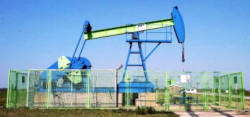
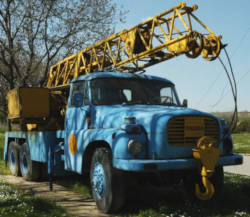
| Location: |
Josef Seitz-Straße, Prottes.
(48.387303, 16.738588) |
| Open: |
no restrictions. Guided Tour: after appointment. [2022] |
| Fee: |
free. Guided Tour: Group EUR 35. [2022] |
| Classification: |
 Crude Oil Crude Oil
|
| Light: | n/a |
| Dimension: | |
| Guided tours: | self guided, L=4 km, D=2 h. |
| Photography: | allowed |
| Accessibility: | no |
| Bibliography: | |
| Address: |
Erdöl-Erdgas-Lehrpfad Prottes, Gemeindeamt Prottes, Hauptplatz 1, 2242 Prottes, Tel: +43-2282-2182.
E-mail: |
| As far as we know this information was accurate when it was published (see years in brackets), but may have changed since then. Please check rates and details directly with the companies in question if you need more recent info. |
|
History
| 1979 | Crude Oil Trail opened to the public. |
| 1996 | oil museum at the start of the trail opened to the public. |
| 2021 | museum refurbished due to the Niederösterreichische Landesausstellung 2022. |
Geology
Today the area is called Weinviertel (wine quarter) because the thick loess layers are very fertile and the lowlands are used for growing wine. The loess is a result of the last ice age, the glaciers crushed rocks into very fine sand which was blown away by the wind. Where it was deposited thick layers of rock dust formed.
The area between the end of the Alps and the Danube is a basin with massive layers of sedimentary rocks of the Mesozoic. The area was covered by the Thethys sea, the predecessor of the Mediterranen Sea. In times of low oxygen value in the lower parts of the sea, the animals which died in the top layers were not decomposed due to the lack in oxygen. The fat became part of the rock, the result was bituminous sandstones. Later it started to move upwards through the pores of the rocks until it reached a water-resistant layer and was trapped. Such traps are exploited.
Description
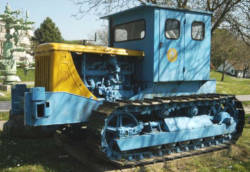
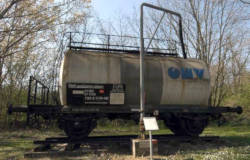
It started in 1979 with the Erdöl- und Erdgas Lehrpfad Prottes (Prottes Oil and Gas Trail). It is a theme path with educational signs and numerous oil related machines along the trail, many of them still in operation. There are 45 stations with more than 150 exhibits, including drills, safety valves for the boreholes, a special truck for drill rods, a bulldozer and even a small drilling rig. In the area of this small village there are 167 boreholes for the pumping of crude oil, there are pumps and machines for the transport of the pumped oil. The trail is actually a free open air museum which is open 24/7 until today. However, the signs from 1979 decayed after decades and became unreadable. In a recent renovation they were replaced by new signs.
One of the highlights of the trail is the last caterpillar tractor still existing in Austria, with the designation "Stalinec". It was used by the Russians during the occupation for transports in the oil region. During the so-called Turmwälzen (tower rolling), completely assembled drilling towers of almost 30 m height were towed from one drilling site to another with Stalinec tractors. The tractor on display is still fully functional. The heaviest exhibit is a Kolbenverdichter (piston compressor)" which weighs 40 t and had to be hoisted to its location with two huge truck-mounted cranes. The exhibits which are still working are operated by the OMV-AG, the Austrian Oil company which operates numerous gas stations all over Austria and in neighbouring countries. They also do tourism, for example they leased the Postojna caves in Slovenia and operate them very successfully.
In 1996 a new museum was opened to the public at the start of the trail. The museum has an exhibition on the formation of oil and natural gas, the geology of the region, and the technology used for mining the oil. Unfortunately it is open only during guided tours which are offered by the municipality. Please make an appointment at the Gemeindeamt Prottes, the fee is affordable even for small groups.
The museum and the trail was refurbished due to the Niederösterreichische Landesausstellung 2022, financed by the OMV and the municipality. The Landesausstellung is a sort culture and technology fair, similar the world fairs of the 19th century, but only for the state Niederösterreich. Innovative companies and cultural institutions are presented to the public, and generally there are funds which are used to improve the sites before the fair. So it is actually a good thing for the participants.

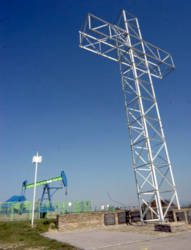

 Search DuckDuckGo for "Erdöl-Erdgas Museum Prottes"
Search DuckDuckGo for "Erdöl-Erdgas Museum Prottes" Google Earth Placemark
Google Earth Placemark OpenStreetMap
OpenStreetMap Erdöl-Erdgaslehrpfad
Erdöl-Erdgaslehrpfad  (visited: 23-MAY-2022)
(visited: 23-MAY-2022) Index
Index Topics
Topics Hierarchical
Hierarchical Countries
Countries Maps
Maps